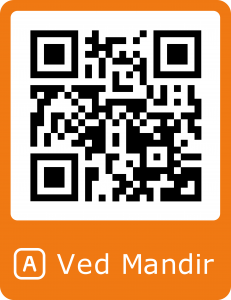Captain Kumar: Namaste Swamiji. I am thankful to you for considering my question. Moksha/salvation is a journey of soul/aatma from sthul sharir to 5th body of aatma (atmsharir) in which one get rid from (dukh, kasht, vyatha, pira, hinsa, ghrina, rag-dwesh) and all kinds of vasnas. And that is why we get divine pleasure. But what after that? Mukti in our shastra is called bhavmukti and second mukti is sayujya mukti which is the 6th body of soul whose center is Agya chakra. in this sixth stage which we get (apne aap se mukti.). In this stage of soul/atma it feel its existence only.
Captain Kumar: Namaste Swamiji. I am thankful to you for considering my question. Moksha/salvation is a journey of soul/aatma from sthul sharir to 5th body of aatma (atmsharir) in which one get rid from (dukh, kasht, vyatha, pira, hinsa, ghrina, rag-dwesh) and all kinds of vasnas. And that is why we get divine pleasure. But what after that? Mukti in our shastra is called bhavmukti and second mukti is sayujya mukti which is the 6th body of soul whose center is Agya chakra. in this sixth stage which we get (apne aap se mukti.). In this stage of soul/atma it feel its existence only. This 6th body is called brehmsharir and then (ahem bremasmi) or brehmgyani words originates. Now everything is known in this universe and nothing is left to know about. But what after that? After 6th stage is 7th body of soul whose center point is sehstrar chekra and at this stage existence gets over but from where? Ans is from bhagwan ki banai hui shrishty se baher nikel jana and my question was that is it called bhagwat prapti means bhagwan ko prapt kerlena? Which I think it is the end of journey of our soul. I think you must have understood my question.
Please put some light on it.
Swami Ram Swarup: Namaste and you are most welcome. There are three types of bodies- sthool, suksham and karann sharer which are further divided into Panchkosh:
1. Annmaye kosh
2. Prannmaye kosh
3. Manomaye kosh
4. Vigyanmaye kosh
5. Anandmaye kosh
Annmaye kosh means the corporal/physical body. Prannmaye kosh comprises of prann, apan, vyan, samaan, udaan, naag, koorma, krikal, devdutta, dhananjaye. By doing prannayaam, a person obliterates his sins and becomes capable of controlling his mann and other ten organs of action and perception. Power of mann which remains all over the body is called Manomaye kosh. Distinct from manomaye kosh, there exists Buddhimaye (intellect) i.e., Vigyanmaye kosh. The manomaye kosh is full of Vigyanmaye kosh.
In the vigyanmaye kosh i.e., in soul the faith and knowledge etc., generate. The pious deeds are done by the learned mind (intellect). The mind is nearest to soul and is greatest of all the organs (of senses and that of action). Upto Vigyanmaye kosh, knowledge is attained. With the result of performing yajyen, name jaap, contact with learned acharya of Vedas and yoga philosophy and by doing hard practice of ashtang yoga under his guidance, a Yogi attains Samadhi and realises several waves of divine pleasure within him. At the stage of Dharmamegh Samadhi, the Yogi is indulged in experiences somrus i.e., unlimited divine pleasure of realizing God since the said pleasure is experienced in heart. Therefore, the kosh which is situated in heart is called Anandmaye kosh and thus the soul attains salvation.
The alive body of the Yogi who may also be called Brahmagyani and who has attained salvation is called “Turiya body” which you can say as sixth kosh Brahmasharir. You may call it Sayujya mukti.
However, name of sixth kosh and Sayujya mukti/Brahma sharer have not been mentioned in Vedas. Mukti means to be free from facing the entire result of the deeds by the soul. For example- A criminal is sentenced to jail for a stipulated time. When the time period is over, he gets liberated from jail. Similarly, Soul gets several births and death to face the result of his own deeds (types of deeds being sanchit, Prarabdh and Kriyamann). When a person attains above quoted Samadhi/salvation, it means God has given him freedom from facing any type of deeds and hence the person is called mukta atma (liberated soul).
Bhav mukti may be considered to be free from fear of facing deeds in birth and the deeds are faced in this earth so the earth i.e., the world is called “Bhavsagar”.
On the subject of “Aham Brahma asmi”. I have written books:
1. Vedanta and eternal Vedas philosophy Part I worth Rs.31/- and
2. Vedanta and eternal Vedas philosophy Part II worth Rs.20/- excluding postal charges.
I would therefore advise you to please go through the said books which are totally based on vedas’ knowledge. After studying the said books, you may please send your query if any, you are always welcome.
Bhagwat Prapti is attained while a Yogi attains Dharmamegh Samadhi as quoted above, the detailed explanation of Dharmamegh Samadhi has been briefed in my book- Patanjal Yog Darshan Part II paad 4 (in Hindi) worth Rs.200/- excluding postal charges. I would feel personal pleasure if you please also study the said Hindi book and I am sure the book will give you additional knowledge about Yam, Niyam, Asan, Pranayaam, Pratyahar, Dharnna, Dhyan, Samadhi, etc.
The book can be sent immediately on receipt of your postal address, if you so desire. Even the Hindi book can be presented to you from my side, please.

